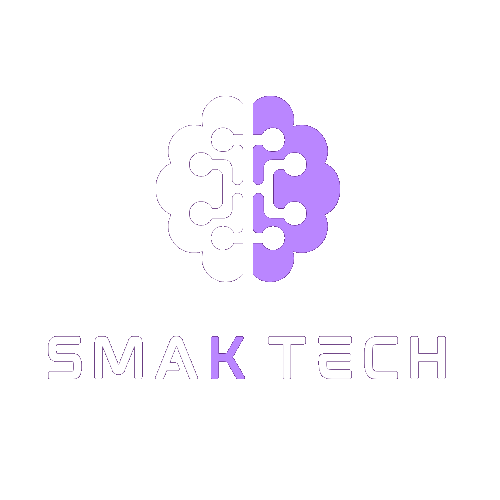In this digital age, just imagine how it would appear or feel when you see any child or youngster step into the classroom full of technology, where they seem to be learning in a fun way, having knowledge of this real world with all the visuals and better interpretation. Sounds great, right? But there is always “what if.”
What if the student is not active in learning new things? What if they get bored? They cannot focus? And what if they do not engage? The problem arises here in this digital age.
We at SmakTech have come up with the solution, the strategies for schools to improve student engagement in the digital age. All you need to know is here, with some magical tips that you will never get anywhere. Stick to the end to unlock the magic box full of tips.
Willing to know such more information. Click the button below and stay tuned for the next one.
Let’s first go with some effective strategies for schools to engage students in the digital age:
Table of Contents
ToggleAccess to interactive programs
Such personalized challenges are based on students’ needs, and students will get to learn by themselves. You might have heard somewhere that children learn their best on their own, and it is 100% right. By using such interactive programs, student engagement will increase and also impact student achievement positively. Here are a few interactive programs that schools can use for engaging students:
Here are a few interactive programs that schools can use for engaging students:
Integrating blogging into the classroom
Blogs are genuinely a better option to enhance writing skills and communication, develop analytical thinking, and share expertise, and they are the best source for improving student engagement. Schools should bring “Youth Voice” into the classrooms. It’s basically a school-based social network platform where teachers bring students online together to share their writing. At this place students from the whole world engage with each other through writing, and this is what real learning is called in this digital age. Here’s a list of such platforms similar to Youth Voices:
Here’s a list of such platforms similar to Youth Voices:
Give access to educational apps
Schools need to give access to the students of such apps. What students are going to learn is solving math problems, language learning with fun communication skills, and more. Student-based apps are best for engaging them more and it’s indeed a smart move towards learning
Here, suggesting the different tools for different activities for students to learn by themselves in a creative way:
- ABCmouse.com – overall app for early learning
- Maths Trainer – Improve mathematics ability
- SplashLearn – effective and personalised learning
- CodeMonkey – coding and game development
- Effling – e-book library for kids
- ClassDojo – educational communication app
- Science360 – Kids science app
- Spelling Stage – spelling challenge for kids
- Starfall ABCs – alphabet app for kids
- Handwriting Succes – For handwriting practice
- Random Letter Generator – Funs & educational tool for kids
Replace chalkboards to smartboards
This smart display provides an extensive canvas for teaching, high-definition visuals, and more. Smartboards create interactive learning environments. There are some key features of smartboards, as follows:
- Interactive activities
- easily recognize handwriting
- conversion to text
- Connect with computers, projectors, and smartphones.
Augmented reality (AR)

There are a wide variety of AR apps available, which is a fantastic way to improve student engagement in the classroom. Suppose teachers are educating about any ancient world map; then they can navigate the map through AR apps or any navigation tools to make students learn with understanding.
Dropping some AR apps below; check it now for more information:
why technology is important in the classrooms
As you all know about this digital age, in this era, if students still get education through traditional ways or methods, they are supposed to not be able to move further. This is just a fast phase where, from the child’s beginning, it is necessary to keep up to date with emerging technology. At the global level, about 50% of the world’s lower secondary schools are connected to the internet. This percentage is low as it is isthe wholeholw world.
Education with technology has a greater impact than normal education. Students learn with real-world scenarios, some visuals with audio, online quizzes based on students’ mindsets, and more. The student’s engagement & focus can be improved at a high level throughout digital learning, and this is why we believe that technology should be a must in the classroom in this digital age.
Willing to know such more information. Click the button below and stay tuned for the next one.
Tips
The magical tips are finally here as promised for schools to cater to smooth learning with technology in the classrooms.
- Provide gamification of learning in the classrooms, which helps increase focus in the learning with fun activities. Students will keep engaging, and they will learn with entertainment.
- Make education sessions interesting by adding online quizzes at the end of the session. This is highly recommended, as students will be curious to answer the quiz, and for that, they will get the whole session full of focus.
- Make students hear podcasts in the last lecture to get knowledge of the real world and have critical thinking through listening to the points of view of others. They will also get a bundle of knowledge through kids’ podcasts. You know what? 48% of kids from the 13 to 17 age group have listened to podcasts, which is a positive sign to start with.
There are many other things that schools can apply in the classrooms to improve student engagement. The training of educators or teachers is necessary to run successful e-classrooms in the schools. The training needs to include teaching them about various apps, especially for kids’ fun learning, such programs, and how and when to run these programs in the classrooms, how to give access to such programs, and making them aware of which games would be suitable for learning math, science, and other subjects with fun. So, making teachers aware of this technology and how AI works in the classrooms is also an important thing.
Hi, I’m Chhaya. I am from Gujarat. I’ve completed my M.B.A. in Business Management from N.M.I.M.S—Mumbai. I have always had a keen interest in marketing and writing. I began my journey by applying my skills to support educational bodies and EdTech firms, and along the way, I have gained immense experience in this field.
With time, my interest in Education and the Ed-tech industry drew me to gain valuable experience by working with two Ed-tech companies. In short, I can be that go-to person if one needs to know about the Education and Ed-Tech scenario in India and understand the intricacies of the field.
Apart from this, my interests are reading and writing!
Feel free to ping me on my work email, chhaya@smaktech.com, to discuss my work at SmakTech or for any work-related queries!



